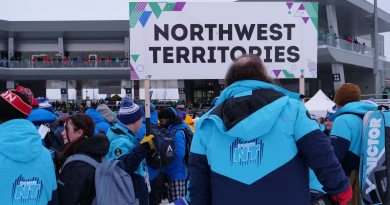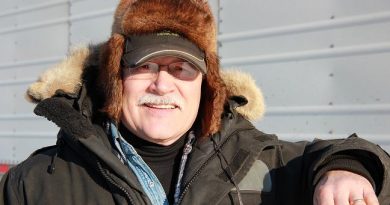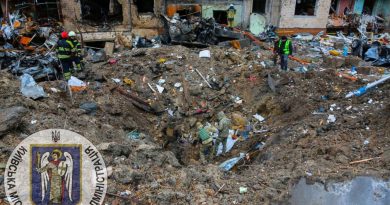Researchers get rare time-lapse video of glacial lake flood in Northern Canada
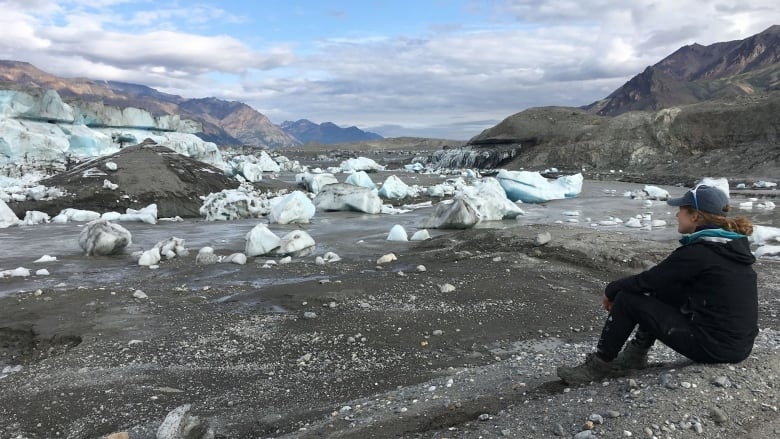
When scientists installed a time-lapse camera near the Donjek Glacier in Kluane National Park and Reserve in July, they thought they were giving themselves lots of time to capture a unique phenomena.
But just one day later, on July 13, an ice dam holding back a sizeable lake at the terminus of the glacier broke, releasing into the Donjek River.
“We were super lucky to catch it,” said Luke Copland, professor of geography, environment and geomatics at the University of Ottawa. He’s been studying glaciers in the St. Elias Mountains for more than 12 years, and the Donjek Glacier for a handful of years.
This is the first time a glacier lake outburst flood at the Donjek has been captured on video. It’s also the last time for a while that there will be a flood outburst, because of the glacier’s surge cycle.
The Donjek Glacier is among a small category of glaciers known to surge. It will barely move for a decade or so, and then suddenly advance a kilometre or more down the valley. According to Copland’s research, less than one per cent of glaciers world-wide behave like that, although Alaska and western Canada are home to 113 such glaciers.
During the Donjek Glacier’s last surge, which ended in 2014, it advanced enough to block the Donjek River. Using satellite imagery, Copland and his team discovered that this blockage has caused a lake to form every year since then.
Earlier than expected
When the lake builds up enough, it starts flowing under the ice, lifting it up like an ice cube floating in a glass of water. Eventually, the lake drains into the valley below. The dam fills up with ice over the winter and the cycle begins again.
This year, the lake release happened earlier than expected.
“In other years it seems that it occurred more in August. and that’s why we’re a little bit surprised that it occurred [in July],” said Copland.
“This was an unusually warm summer and a very warm spring as well. I think that caused more runoff from upstream areas than usual.”
Copland doesn’t think the lake will form again next year. He said in previous years, water tunnelled under the glacier while the ice above remained intact, but this year the flood carved a deep canyon though the ice that will not fill in over the winter.
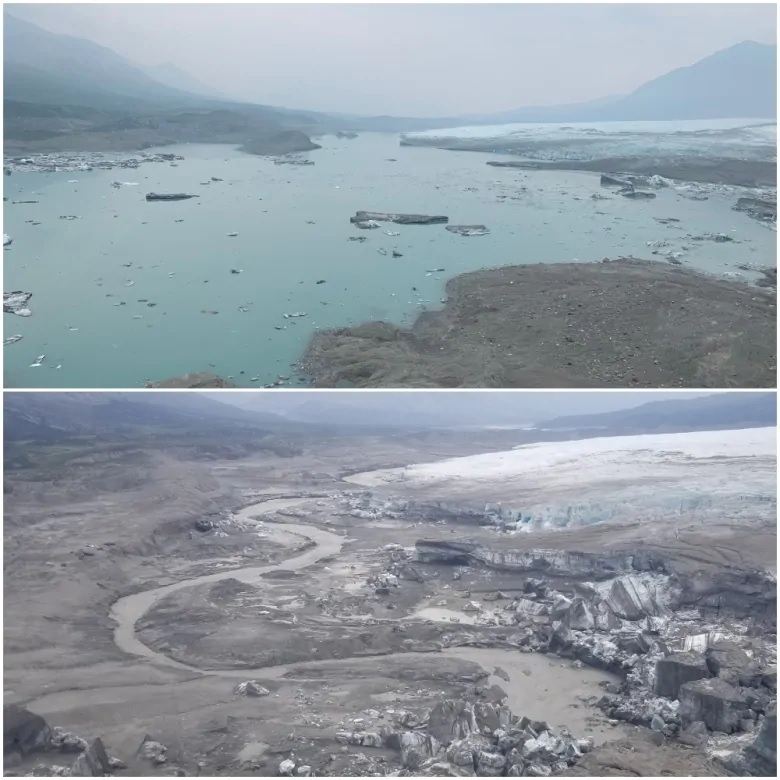
Down river danger?
Haley Digel may have been the first person to see the Donjek River after it flooded, although she didn’t realize it at first.
The Whitehorse resident was hiking with her father on the multi-day Donjek backcountry route and were camped near the confluence of the Donjek and Hoge rivers in Kluane National Park and Reserve on Jul. 14. That was just one day, unbeknownst to them, after the lake started releasing.
As they hiked up valley, paralleling the river within about 100 metres, Digel remembers being perplexed by the wet ground, since it hadn’t rained lately.
“We were walking through this really soupy, saturated land with a whole bunch of sedimentation deposited … in the trees. It looked like something had flooded over,” she said.
When they reached the foot of the glacier on Jul. 15, there was no lake.
“It was kind of funny because my friends had told me that there was this lake there and there was pictures of them in their packrafts [small inflatable boats] sitting in this beautiful aqua-marine blue glacial lake … That’s when we started to think ‘Oh maybe this lake has burst.'”
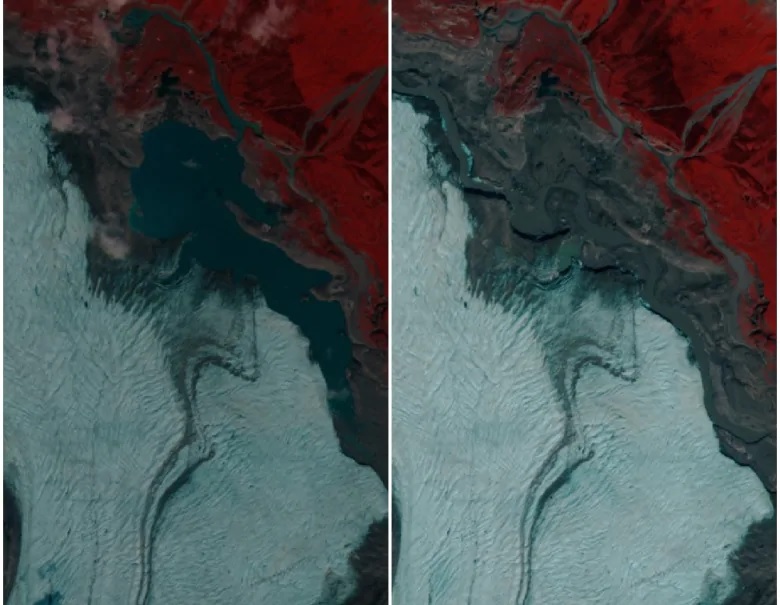
Digel said when she registered her trip with Parks Canada before leaving on the hike, staff warned her not to camp or hike too close to the river or lake, but said they weren’t expecting the lake to release until August or September.
The Donjek River is also becoming a more popular destination for packrafters, people who hike in with inflatable boats. At least one group of packrafters paddled the Donjek River earlier in July, before the flood release.
Parks Canada would not agree to an interview but said in a statement that flooding could pose a hazard to visitors in the riverbed area. It said it planned to release a travel advisory for the area during the summer, but the lake released earlier than anticipated. Prior to that, its backcountry registration system was used to communicate the risk.
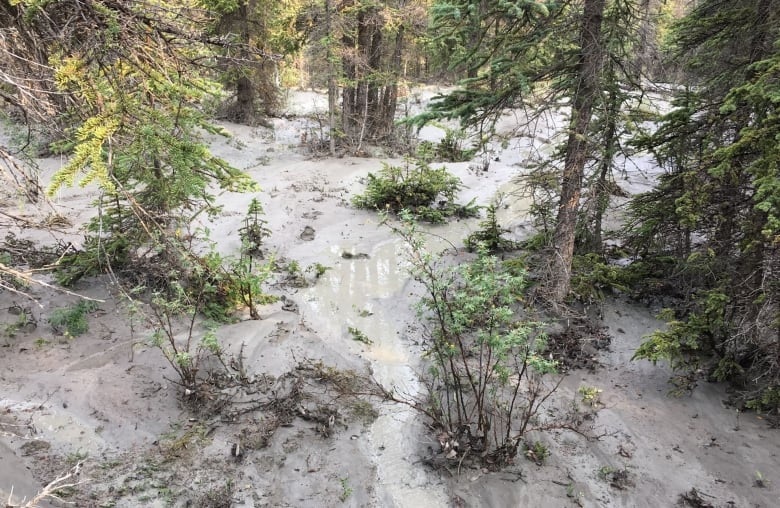
Incorporating traditional knowledge
Copland says because research about the lake is so new, it’s not yet known what happens downstream when the dam releases, but he says a lot of water came down in the most recent flood.
“It’s a significant flood. We’re draining a 1.6 square kilometre lake that’s [in] places up to 50 meters deep.”
Copland says his team is looking into whether past flood events have changed the course of the Donjek River or damaged any downstream infrastructure.
The Donjek River flows under a bridge on the Alaska Highway approximately 50 kilometres downstream of the glacier.
Moya Painter, a Yukoner starting her Master’s research under Copland, will be working with Kluane First Nation to see if there is any traditional knowledge related to past flood events. The Donjek River is in the First Nation’s traditional territory.
Painter said anecdotal information may help fill in the gaps during periods when there wasn’t scientific monitoring.
“For us as researchers, we can gain a lot of … historical information in particular that we would never be able to know otherwise.”
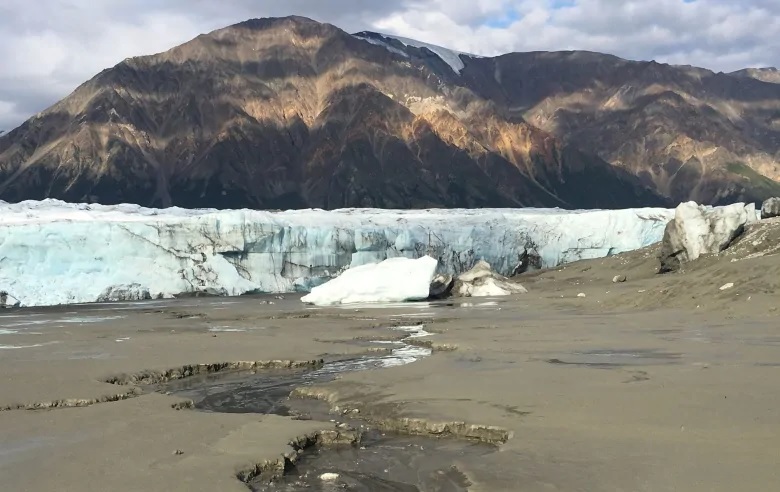
Kluane First Nation did not respond to an interview request.
Copland and his crew will be back in the area next summer. They plan to drill ice core samples at the toe of the glacier to monitor changes in temperature and water pressure in their quest to learn more about what causes glaciers to surge.
The Donjek Glacier isn’t the only surging glacier in Kluane.
The Lowell Glacier previously dammed the Alsek River during a surge, causing the river to back up. As recently as 1850, it produced a lake that would have flooded the current townsite of Haines Junction.
Related stories from around the North:
Canada: Glacier-fed rivers in Arctic Canada sucking carbon dioxide out of the air: study, CBC News
Finland: Climate change spurs growth of exotic fruit in Finland, Yle News
Greenland: Greenland ice cores reveal historic climate clues, says study, Eye on the Arctic
Norway: Climate change is about to divide Norway’s largest Arctic island, The Independent Barents Observer
Russia: Retreating ice reveals new land in Arctic Russia, The Independent Barents Observer
United States: Super salty water in northern Alaska helping scientists learn about conditions for life in space, CBC News

